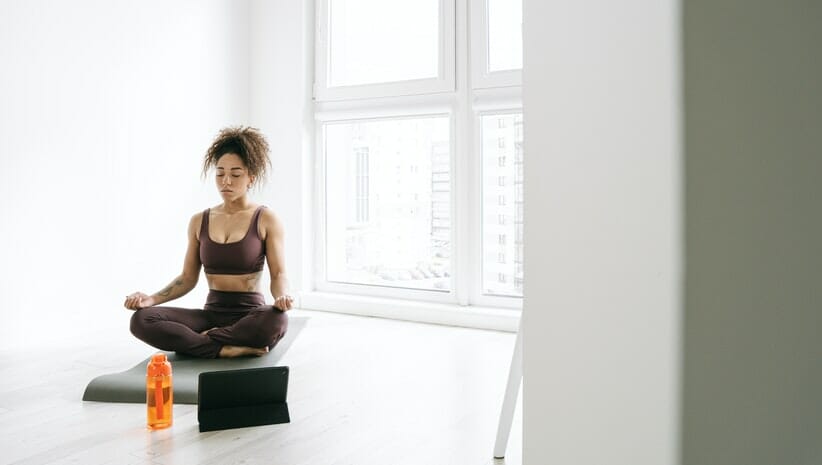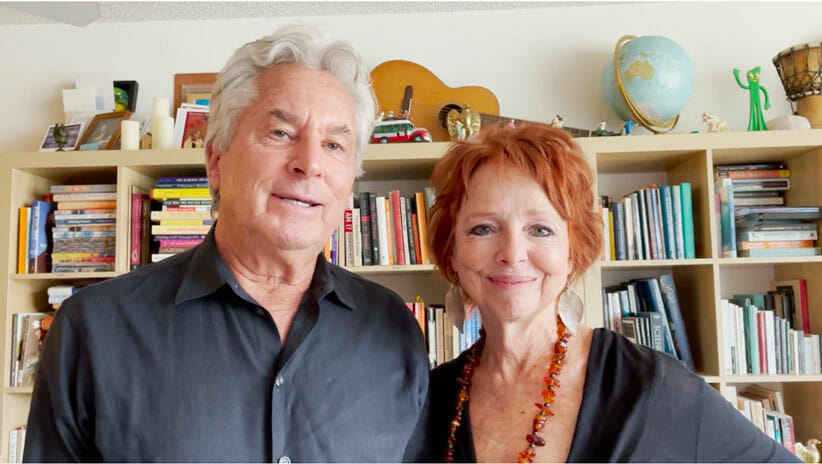
Why Befriend Yourself in Meditation
You may not consider how to befriend yourself in meditation, but when you shift your mindset, you can develop a friendly and compassionate approach to the practice. Try the following five practices and approaches to meditation.
1. Let Yourself Love What You Love
Think of meditation as immersing yourself in the flow of love. Yoga means “connection,” and in meditation we allow our attention to connect intimately with the flow of the life force, so deeply that we fall in love, merge, and come into union. One tangible flow of the life force is breathing, and each breath connects us with the mystery of life within us and all around. In meditation, breathe in the way you do when engaged in what you love – walking in nature, making love, playing sports, dancing, listening to music, cooking, savoring the aroma of wine. The essence of all meditation techniques is savoring the thrill of aliveness.
2. Love Your To-do List when you Befriend Yourself in Meditation
People with busy lives generally spend half of their meditation time, or more, simply sorting through their to-do lists. This involves skillful attention – feeling the energy or passion or tension that goes with each item, each action, and choreographing the action flows. To the brain and body, your to- do list is an asana flow and the sequencing is important, as are transitions.
When we are meditating and shift from inward absorption to outward orientation, this is yoga. This is connecting our inner world with our outer world. Whatever we think about in meditation becomes infused with prana and flow, and later when we are in action, there is a kind of sparkle and flow to our daily life. What this means moment-to-moment in meditation is to celebrate every thought that arises, welcome it as a little package of prana, welcome whatever urgency or feeling is associated with that impulse toward action.
3. Delight in the Rhythm of Inner and Outer
During meditation, our attention often switches every half a minute between feeling sensations of relaxation in the body and then becoming absorbed in mental movies about what to do in the outer world. This is a natural rhythm of inner and outer, a pulsation of life. Sometimes you will find yourself pulsating inner- outer every few seconds, sometimes every couple of minutes. Think of this as an inner asana flow, as beautiful and natural as breathing in and breathing out. There are days when it seems like we are daydreaming the entire time we are meditating, even if we sit there for 20 minutes.
When you emerge from a long sequence of thoughts and remember, “OMG, I am meditating! What time is it?” Be gentle and humorous and loving toward yourself. Do not “return to the mantra” or “bring your attention back to the breath.” Rather, just sit there and enjoy yourself and be sensitive to where you are in your rhythm of inner and outer. Take a few breaths and savor the sensations in your body.
4. Sit with your Feet on the Ground
The best meditation posture for many of us is in a comfortable chair with back support, and feet on the ground. This is called the Maitreya Asana and it has a lot of advantages. One day in 1969 I was meditating at Esalen Institute in Big Sur, California, sitting cross-legged near the cliff overlooking the ocean. My bodyworker, Ed Maupin, came by and when I opened my eyes, said, “Let’s have a talk.” He explained to me that even the half- lotus can over-stretch the connective tissue around the knees and lead to arthritis and injuries later. It turns out that Ida Rolf studied Tantra Yoga from 1920 to 1930 with Pierre Bernard, the first American yogi, and he taught her Yoga Massage. They figured out, a hundred years ago, that the lotus and even half- lotus can be damaging. Because of this insight, my knees are great, even though I am 72 and have spent about 25,000 hours in meditation over the past 52 years.

Meditation Teachers Lorin Roche and Camille Maurine
5. Don’t Judge your Meditation Experience
If we practice meditation in a way that is healthy for us, our body and heart and brain will just take what they need. This is because we feel safe to heal, safe to be ourselves. It is common for people to cry the entire time they are meditating, for months after beginning. It is such a relief to be able to “just be myself and feel my heart.” Then one day the tears cease to come and you feel renewed, years younger. Or you may feel filled with sexual passion during meditation, with tingling electricity flowing around under your skin. You might be angry, or sad, or start laughing.
Welcome all your moods and emotions. Meditative experience is infinitely varied and includes the interaction of all of the senses, all possible emotions, innumerable bodily sensations, and all the instinctive motions of life. In one minute we are at home, feeling safer and more relaxed than ever in our lives, and this is followed by a gush of electricity that is so intense as to be scary and taboo – how can I handle so much power of aliveness?
As you experiment with fitting meditation into the flow of your daily life, judge your meditation by its effect on your ability to live. This is how to judge meditation – how does it enhance your ability to work, love, play, and rest? If you give half an hour in the morning to meditating, does it enrich the other 23 1/2 hours of the day?
Meditation is a universal human instinct, we all can do it. The key to how to befriend yourself in meditation is to practice in your own way.
Dr. Lorin Roche began practicing with the Vijnana Bhairava Tantra in 1968 as part of scientific research on the physiology of meditation. He has a PhD from the University of California at Irvine, where his research focused on the language meditators generate to describe their inner experiences. He is the author of The Radiance Sutras and Meditation Made Easy. With his wife, Camille Maurine, he wrote Meditation Secrets for Women. A teacher of meditation for 46 years, Lorin’s approach centers on how to customize the practices to suit one’s individual nature. Lorin leads the Radiance Sutras Meditation Teacher Training, a 200 hour certification program registered with Yoga Alliance. Lorin teaches regularly at the Esalen Institute and around the world.
